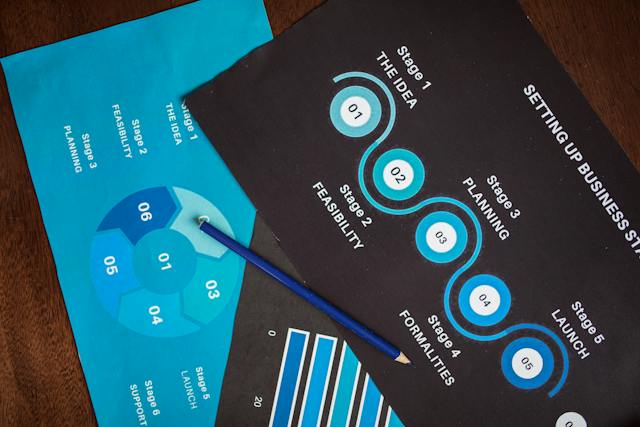Software-as-a-service (SaaS) companies have experienced exponential growth in the last decade. There are many metrics that help gauge their success, including deferred revenue and SaaS revenue. Deferred revenue can be a tricky concept, as it involves the recognition of income or expenses on the balance sheet at a later date. This post explains deferred revenue and SaaS revenue recognition as well as different types of deferred income that can help create a broader picture of how well a SaaS business is doing.
Introduction to Deferred Revenue
The term “deferred revenue” or “unearned revenue” refers to money that has been received, but not yet earned. This money is typically recorded as a liability on the balance sheet until it is earned and can then be recognized as revenue.
Deferred revenue is an important metric for evaluating the financial health of a company. It is a key notion for businesses that receive payment before they deliver on their services and goods.
It is typically seen in industries such as Software-as-a-Service (SaaS), subscription services, and goods that are sold with extended warranties or maintenance plans. In these scenarios, customers usually pay in advance for the services or goods that they will receive in the future. In such a business model, the money received in advance must be recorded as deferred revenue until the services or goods are delivered.
Example: A customer has signed up for a 12-month, $24,000 contract with a SaaS provider and paid the full amount upfront. Although the provider has received all the revenue, it has not yet delivered the services. This revenue is called deferred revenue. After a month, the provider will recognize $2,000 as earned revenue and keep doing so until it has delivered the services and all deferred revenue has been turned into actual revenue.
Recognition of Deferred Revenue
Recognition of deferred revenues helps companies accurately reflect on their financial situation. It also enables them to safeguard the interests of their customers. There are certain criteria for recognizing deferred revenue. Generally, deferred revenue is recognized once the company has satisfied the performance obligations of its contract with the customer.
Once the services are delivered, deferred revenue can be recognized in accordance with Accounting Standards Codification (ASC) 606. It is an accounting standard for recognizing revenue from contracts with customers. Under ASC 606, companies must use the five-step process of revenue recognition to accurately record deferred revenues.
- Identifying performance obligations: The first step involves determining which goods or services a company is obligated to deliver under their contract with the customer.
- Measuring progress towards performance obligations: Next, the companies must estimate how much value they will provide to their customers over the course of the contract.
- Determining transaction price: This step requires companies to assess how much value they will receive from their customers in exchange for what they are offering them.
- Allocating transaction price: Afterwards, companies should break down the transaction price into individual performance obligations to estimate the value of each.
- Recognizing revenue when performance obligations are satisfied: Once all other steps have been completed and they have delivered on the promises specified in the customer contract, companies can recognize their deferred revenues as actual revenue.
You can read about the pros and cons of deferred revenue in the linked post.
Introduction to Software as a Service (SaaS) Model
Software as a Service (SaaS) is a software licensing and delivery model in which a software is centrally hosted and licensed on a subscription basis. This models allows organizations to use software applications over the internet without having to develop and maintain the underlying hardware and software infrastructure. It also has the potential to decrease costs significantly whilst increasing the speed of delivery.
Unique Characteristics of SaaS Revenue Recognition
Revenue recognition for SaaS companies follows three major principles:
- Connecting revenue recognition with the customer’s consumption of services.
- Allocating revenues over the period of subscription.
- Delivering services under long-term contracts with upfront payments from customers.
This post explores what SaaS is and how it is taking over the IT world in more detail.
Key Considerations for Recognizing SaaS Revenue
Some key considerations for recognizing SaaS revenue include:
Subscription-Based Revenue Model
When customers purchase a subscription model, the company must meet certain criteria before it can recognize revenues for the period. These criteria include ensuring that all promised services have been delivered, or that tangible products have been provided, and that the customer has received their product or service in good faith. When all goes well, the customer is likely to continue paying for additional products or services in the future.
Multi-Year Contracts and Upfront Payments
Companies offering multi-year contracts to customers must spread out their revenue recognition over the term of the contract. It involves pro-rating revenue recognition depending on when services are delivered during each period. Revenues from upfront payments must also be deferred until their criteria are met, only then can they be recognized as earned.
Delivery and Performance Obligations
To recognize revenue associated with services rendered, companies must ensure they meet all delivery obligations as expected by their customers. Providing services over an extended period of time may require recognizing revenue across several months or even years. All of this is based on performance obligations being fulfilled in accordance with the agreed terms between both parties.
Usage-Based Revenue Recognition
For usage-based SaaS subscriptions, revenues must be recognized based on customer usage metrics. Monitoring these metrics ensures usage levels remain consistent throughout the term of the subscription contract. It is a part of overall compliance with revenue recognition rules applicable to SaaS companies.
SaaS Revenue Recognition Methods
There are several revenue recognition methods commonly used in the SaaS industry. The appropriate method to use depends on the specific circumstances of the SaaS company and the terms of the contracts with customers. Here are some common methods:
Time-Based Recognition Method
The two most common ways to recognize revenue using this method are monthly recognition and ratable recognition models.
- Monthly recognition: Under this method, revenue is recognized in equal installments over the subscription period. Each month, a portion of the total contract value is recognized as revenue. This method is suitable for SaaS companies with stable subscription periods and consistent revenue streams.
- Ratable recognition: This method spreads the revenue recognition evenly over smaller time intervals, such as weeks or days. It allows for more frequent recognition of revenue. It can be useful for SaaS companies with shorter subscription periods, or when the usage of the software fluctuates throughout the subscription term.
Performance-Based Recognition Method
This revenue recognition approach focuses on achieving specific milestones or deliverables outlined in the contract with the customer. The two key aspects of performance-based revenue recognition are:
- Milestone-based recognition: Revenue is recognized when specific milestones or deliverables are achieved. These milestones are defined in the contract and can include objectives like successful implementation, completion of project phases, or specific performance criteria. Revenue is recognized as the milestones are met and the associated performance obligations are fulfilled.
- Usage-based recognition: This method ties revenue recognition to the actual usage or consumption of the software or services. The revenue is recognized based on the agreed-upon usage metrics, such as the number of users, data processed, or API calls made.
Challenges and Complexities in Deferred Revenue and SaaS Revenue Recognition
Proper accounting for deferral of revenue and SaaS (Software-as-a-Service) revenue helps companies remain compliant with financial reporting regulations. It also ensures accurate representation of their financial position. While deferred revenue and SaaS revenue recognition have a great deal of similarities, there are certain key differences that must be taken into account when assessing these transactions.
Determining the Transaction Price
The first step in the process of deferred revenue and SaaS revenue recognition is determining the transaction price. The amount determined for the transaction price should be reasonable and reflect what each party is entitled to.
Allocating Revenue to Performance Obligations
Once the transaction price is determined, allocate it between performance obligations. The amount allocated should represent the fair value of each performance obligation in accordance with contractual terms and conditions. If a portion of the consideration is received up front instead of being allocated across all obligations, it can be deferred until corresponding obligations are satisfied.
Accounting for Contract Modifications and Changes in Scope
Also consider the changes in scope due to contract modifications. When changes occur, the transaction price needs to be re-evaluated to include any additional payments or discounts that were not previously accounted for. This can have an impact on how revenue is recognized based on accounting principles.
Estimating and Recognizing Variable Consideration
Where variable consideration is involved, such as performance bonuses or refunds, how much to pay or refund has to be considered. Recognize this amount over a period of time instead of immediately upon receipt.
Disclosure Requirements and Impact on Financial Statements
Keep the disclosure requirements in mind while recognizing deferred revenue and SaaS revenue. Companies must make sure they are providing complete information about current contracts, including performance obligations that have yet to be satisfied and any potential changes that could affect the amounts recognized in financial statements. Additionally, any changes that occur due to contract modifications or changes in scope should also be included.
Conclusion
SaaS revenue recognition or deferred revenue (also known as unearned revenue) helps businesses report revenues over a period of time. Being a balance sheet liability account, it is a valuable metric to gauge long-term growth and a legal obligation for SaaS businesses using accrual accounting. Keeping track of deferred revenue gives businesses a clearer picture of their revenues and also helps them forecast more accurately, and should be a priority investors and SaaS accounting teams.


